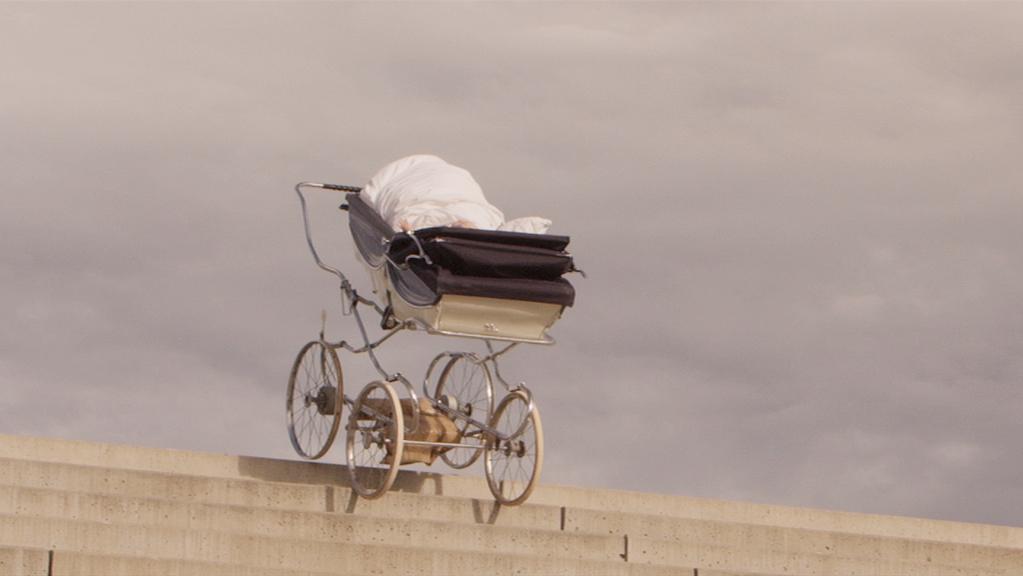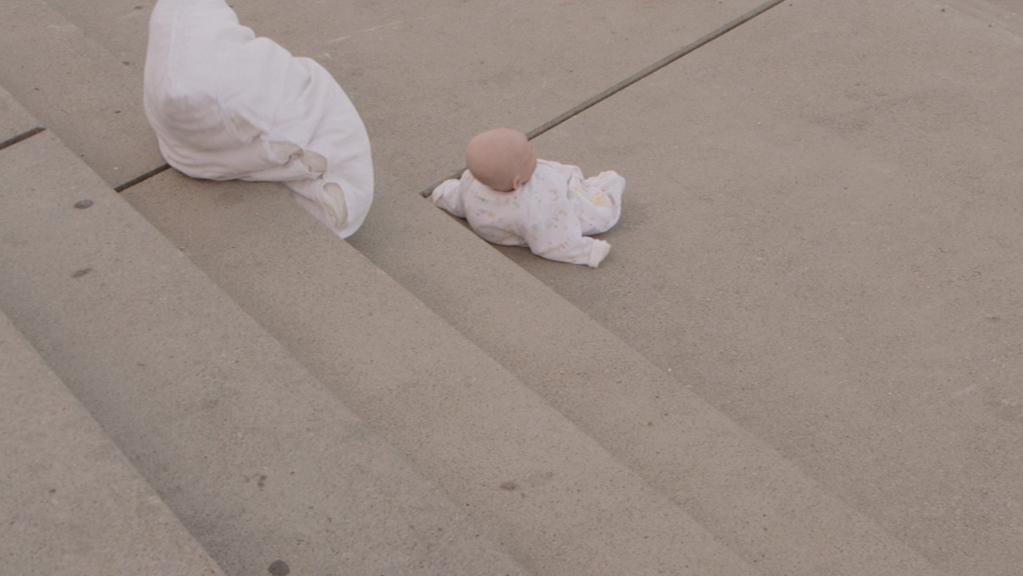Odessa Crash Test (Notes on Film 09)
When Sergej Eisenstein had a baby stroller dash down the Odessa steps as furious finale of his fictive massacre in the revolutionary classic Battleship Potemkin, he created one of the most iconic moments in film. The uncontrolled death ride of a helpless baby—the stroller slips away from the mother who has been shot—was simultaneously an illustration of Eisenstein’s montage principles: as ideal contrast to the mechanical rhythm of the soldiers marching back and forth. Many directors have paid tribute to the scene, for example, Brian De Palma as super slow motion shootout side effect in The Untouchables—which was promptly trumped by Leslie Nielsen & Co.’s heroic slapstick use of it in The Naked Gun 33 1/3.
Now, when Norbert Pfaffenbichler subjects this baby stroller crash down the steps to an Odessa Crash Test, the freeing potential of this fury is first realized untainted by didactic (Eisenstein), dramatic (De Palma) or comic (Nielsen) intentions. His mad stroller ride down the steps is constructed as a sensational stylistic staccato, which seems to casually grotesquely exaggerate the drama and comedy of the situation—the speed of the takes changes just as rapidly as their sizes, formats, and perspectives. Thanks to the wheel-axle camera, the events and images literally rush into one another. The soundtrack switches continually, to twitch between speed rush and slow motion suspense, from thunderous musical melodrama to lurching baby stroller sizzle to breathless silence—which takes the upper hand when the climax arrives that Eisenstein did not dare to show: how the baby is catapulted from the stroller and set soaring in flight, which is appropriately absurdly savored—until the inevitable impact. Odessa Test Crash: a smashing success.
(Christoph Huber)
Translation: Lisa Rosenblatt
Odessa Crash Test. Notes on Film 09
2014
Austria
6 min



